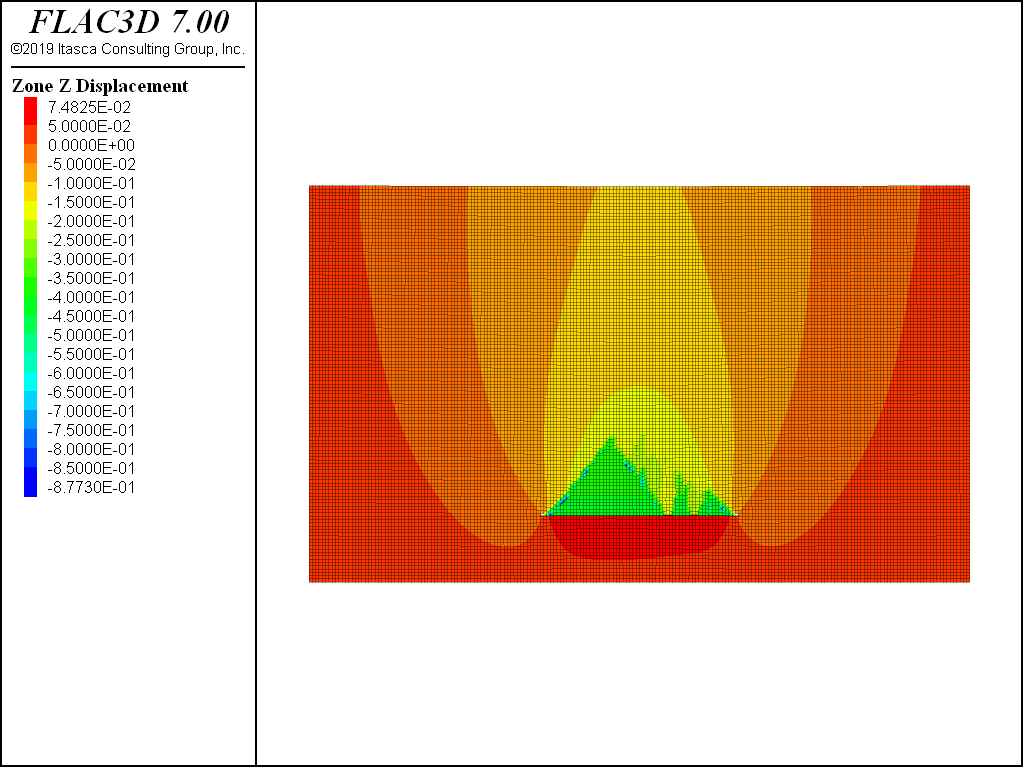
The numerical “sample” must be prepared carefully, and several samples tested, to gain an understanding of the problem. The model should never be considered to be a “black box” that accepts data input at one end and produces a prediction of behavior at the other. Since most FLAC 3D applications will be for situations in which little data are available, this section discusses the recommended approach for treating a numerical model as if it were a laboratory test. If enough data of a high quality are available, FLAC 3D can give good predictions. It is the field situation (and budget), rather than the program, that determines the types of use. Simple geology $$$ spent on site investigationĬomplicated geology inaccessible no testing budgetīracket field behavior by parameter studiesįLAC 3D may be used either in a fully predictive mode (right-hand side of Figure 3.1) or as a “numerical laboratory” to test ideas (left-hand side). Modelers should recognize that there is a continuous spectrum of situations, as illustrated in Figure 3.1: The results produced in a FLAC 3D analysis will be accurate when the program is supplied with appropriate data. But in other applications it may be possible to use FLAC 3D directly in design if sufficient data, as well as an understanding of material behavior, are available. This approach is oriented toward geotechnical engineering, in which there is invariably a lack of good data. Once the behavior of the system is understood, it is then appropriate to develop simple calculations for a design process. Since the input data necessary for design predictions are limited, a numerical model in geomechanics should be used primarily to understand the dominant mechanisms affecting the behavior of the system. For example, information on stresses, properties and discontinuities can only be partially known, at best. It is impossible to obtain complete field data at a rock or soil site. Analyses and designs for structures and excavations in or on rocks and soils must be achieved with relatively little site-specific data, and an awareness that deformability and strength properties may vary considerably. Problem solving for dynamic analysis is discussed in Section 1 in Dynamic Analysis.ģ.1 General Approach The modeling of geo-engineering processes involves special considerations, and a design philosophy different from that followed for design with fabricated materials. * Problem solving for coupled mechanical-groundwater analysis is discussed in Section 1 in FluidMechanical Interaction, and for coupled mechanical-thermal analysis in Section 1 in Thermal Analysis. It is important to keep this in mind when performing any geomechanics analysis. The methodology of modeling in geomechanics can be significantly different from that in other engineering fields, such as structural engineering. Finally, the philosophy of modeling in the field of geomechanics is examined in Section 3.10 the novice modeler in this field may wish to consult this section first. If you have not used the FISH language before, we recommend that you first read the FISH tutorial in Section 4.2. You will note that FISH programs are used in this section to assist with model generation and problem solving.

We recommend that Section 3.2 be studied carefully, and that the example problems in that section be repeated before users create their own model grids. The major difference is the procedure for grid generation. The user who is familiar with the twodimensional program FLAC will find that the modeling approach is very similar in FLAC 3D. Each of these modeling aspects is discussed in detail. interpretation of results (Section 3.9).ways to improve modeling efficiency (Section 3.8) and.choice of constitutive model and material properties (Sections 3.6 and 3.7).loading and sequential modeling (Section 3.5).



 0 kommentar(er)
0 kommentar(er)
